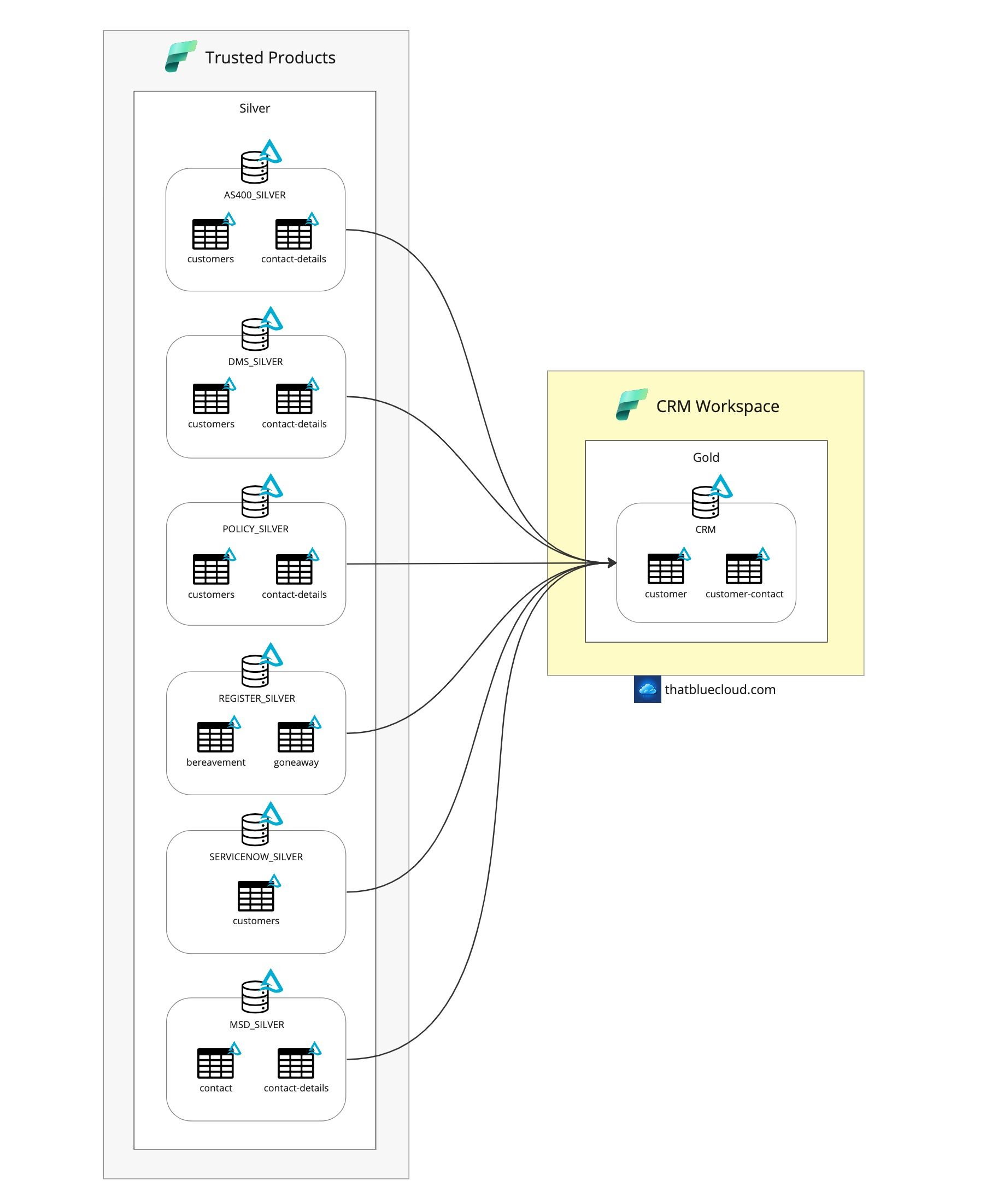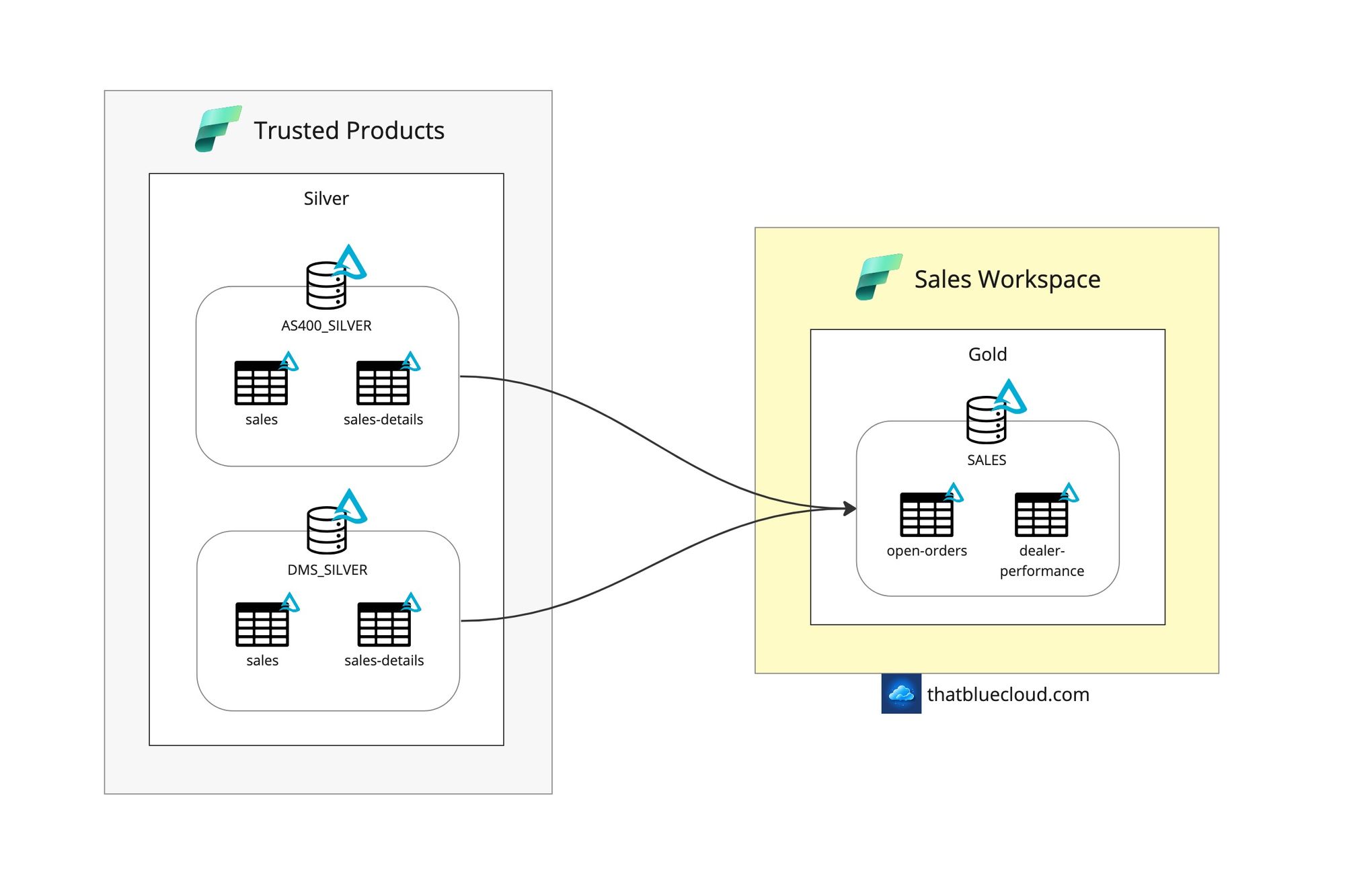Articles in this design series:
- 1 - Introduction
- 2 - High-Level Design
- 3 - Trusted Data Products
- 4 - Gold Data Products
- 5 - Benefits & Drawbacks
CRM
While it's primarily synonymous with tools and systems, most companies don't integrate their CRMs with the rest of their systems. A customer can be created in multiple places, and then there's an effort to move those customers to the central CRM.
However, by utilising the Lake before the data is landed into any CRM system, you can create a more centralised and reusable data storage that would feed into your CRM and be referenced by other systems.
Think of it like this: You're mastering your customer data in a single database, validating it, and merging similar customers before that data lands into your CRM and pollutes it. The changes you make in your CRM can be fed back to this source, combined with other changes, and then returned to your CRM. Most Master Data Management (MDM) tools have this capability, and it can help you singularise multiple copies of the same customer, allowing you to target customers more efficiently and with less cost.
In this example, Microsoft Dynamics 365 is the designated CRM tool, but its Silver layer also feeds into the Gold CRM product. From here, after all the changes and customers are merged, they can return to Microsoft Dynamics and keep the customer information updated.
There's also the data coming from the Registers, which can contain if a customer is deceased or moved away, which should be used when sending marketing campaigns to filter out these customers. That information can be merged into your CRM Gold product and fed into MSD and SalesForce.

Marketing
After the customers order a vehicle, sometimes a wait time changes from two months to a year. During this time, the car gets manufactured and shipped or sometimes added requested packages after production. State change notifications are sent to the customer about their order, but it's also a valuable opportunity to do cross-sales, like selling insurance or extra accessories. This is mainly called a Welcome Journey, which is just one of the marketing journeys that a customer can get through.
Additionally, the customers are segmented based on their interests, previous purchases, and the possibility of purchasing in the next 3-6 months. This is especially helpful if you would like to spend your marketing budget more on customers who have the potential to purchase instead of those who don't.
These can be implemented using various tools or products, but the Lakehouse tech stack can be equally powerful to make these implementations. You can create your segments and send them to Microsoft Dynamics 365 if you don't want to use its Marketing module or directly integrate with SalesForce and launch marketing campaigns.

Sales
This can be expanded into great detail, but as a simple example, imagine that we're keeping a list of open orders and the dealer sales performance in this product. Directly reportable using Power BI and Direct Lake, the business can incorporate these datasets into their dashboards or use other Gold products as a reference.

Next article in the series:

Previous article:



